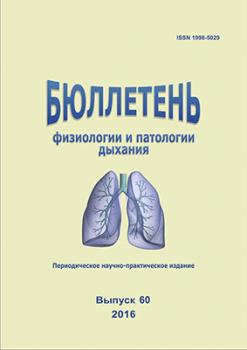Northeast Russia covers areas that significantly differ in extreme impact of natural and climatic factors. Despite the fact that the cities of Anadyr (64°44′00″N 177°31′00″E) and Magadan (59°34′00″N 150°48′00″E) are situated on the coast and experience equal specific influence of the sea climate, abiotic parameters of those environments affect residents of the areas in different ways. Respiratory system has proved to be the most exposed to such conditions and susceptible to potential pathology. Reasoning from this fact it became of interest to study main indices of lung function observed in male students of different northern regions. Computerized spirography was used to comparatively examine the lungs’ volume and flow parameters in 466 north-born male Caucasians in the 1st-2nd generation and 118 male Indigenes residing in Chukotka and Magadan region. As resulted from the study the examinees demonstrated significant differences depending on either place of residence or ethnic origin. The Indigenous subjects from Anadyr were the highest in volume parameters (VC 107%, FVC 112%) while maximal volume and flow indices were demonstrated by Indigenes of Magadan (MEF50 119%, MEF75 139%). The strongest structure of correlation between indices of lung function was found in Caucasians of Anadyr who demonstrated the parameters’ significant interdependence. Indigenes of Magadan region had much fewer correlations. Having analyzed the compensatory and adaptive processes, observed in both examined subjects residing in the same climatic area, we found those processes running the way of convergent adaptation that features the subjects’ lung function indices to become closer.
Extreme North, young males, Caucasians, Indigenes, lung function, adaptation.
1. Anokhin P.K. Sketch book on physiology of functional system. Moscow; 1975 (in Russian).
2. Bukov Yu.A., Burbanova O.N Physiological significance of arbitrary control breathing in perfection reserves of respiratory system in people of different age. Mezhdunarodnyy zhurnal prikladnykh i fundamental´nykh issledovaniy 2014; 9(2):62-66 (in Russian).
3. Vdovenko S.I., Maximov A.L. The external respiration functional profiles in young males residing in different climatic and geographic areas of Magadan region. Vestnik Severo-Vostochnogo nauchnogo tsentra Dal´nevostochnogo otdeleniya Rossiyskoy akademii nauk 2011;4:14-18 (in Russian).
4. Grigor´eva E.A., Kir´yantseva L.P. Weather as a risk factor in respiratory morbidity and preventive measures among students. Bûlleten´ fiziologii i patologii dyhaniâ 2014; 51:62-68 (in Russian).
5. Dorshakova N.V., Karapetyan T.A. Features of northern inhabitants pathology. Ekologiya cheloveka 2004; 6:48-52 (in Russian).
6. Es´kov V.M., Khadartsev A.A. System analysis, management and processing of information in biology and medicine. Part VIII. The general theory of systems in clinical cybernetics Samara: OFORT; 2008 (in Russian).
7. Zheleznov-Chukotskiy N.K., Zheleznova T.K. Ecological factors of population health in the territory of Northeast Asia. Nauchnyy dialog 2015; 2:41-62 (in Russian).
8. Klement R.F., Lavrushin A.A., Ter-Pogosyan P.A., Kotegov Yu.M. Guidelines for using formulas and tables of proper values of basic spirographic indices. Leningrad; 1986 (in Russian).
9. Krenke A.N., Zolotokrylin A.N., Vinogradova V.V. Natural-climatic zoning of North and East Russia. In: Kotlyakov V.M., editor. Region aspects of Russia’s development under global environment and climate changes. Moscow: ENAS; 2001. pp.65-74 (in Russian).
10. Lutsenko M.T. Far Еastern population health determining factors. Bûlleten´ fiziologii i patologii dyhaniâ 1998; 1:4-14 (in Russian).
11. Maksimov A.L., Sukhanova I.V., Vdovenko S.I. Tendencies of adaptive changes in young men of Magadan Oblast. Vestnik Dalʹnevostochnogo otdeleniya Rossiyskoy Akademii nauk 2010; 4:117-123 (in Russian).
12. Prikhodko A.G., Perelman J.M., Kolosov V.P. Airway Hyperresponsiveness. Vladivostok: Dal´nauka; 2011 (in Russian).
13. Sakhno Yu.F., Drozdov D.V., Yartsev S.S. The study of pulmonary ventilation. Moscow: RUDN; 2005 (in Russian).
14. Sidorov A.A., Volkov A.V. Resource regions development (through the example of Alaska and Chukotka). Vestnik Rossiyskoy Akademii nauk 2008; 78(10):867-874 (in Russian).
15. Ushakov V.F., Kostrubina V.A., Zavolovskaya L.I., Bashkatov V.A., Konrat O.N. Cold bronchial asthma. Surgut; 2010 (in Russian).
16. Chesnokova V.N., Varentsova I.A., Golubina O.A. Assessment for students’ adaptabilities at the beginning of their study course by data of donosology research under north conditions. Uchenye zapiski Orlovskogo gosudarstvennogo universiteta 2010; 4:143-149 (in Russian).
17. Shishkin G.S., Preobrazhenskaya V.K., Kulichevskiy D.V Mobilization of functional reserves of the lung respiratory segment at adaptation to the North climatic factors. In: Trufakin V.A., Shoshenko K.A., editors. Sketch book on Ecological Physiology. Novosibirsk: SO RAMN; 1999. рр.112-118 (in Russian).
18. Schermer T.R., Jacobs J.E., Chavannes N.H., Hartman J., Folgering H.T., Bottema B.J., van Weel C. Validity of spirometric testing in a general practice population of patients with chronic obstructive pulmonary disease (COPD). Thorax 2003; 58(10):861-876.





